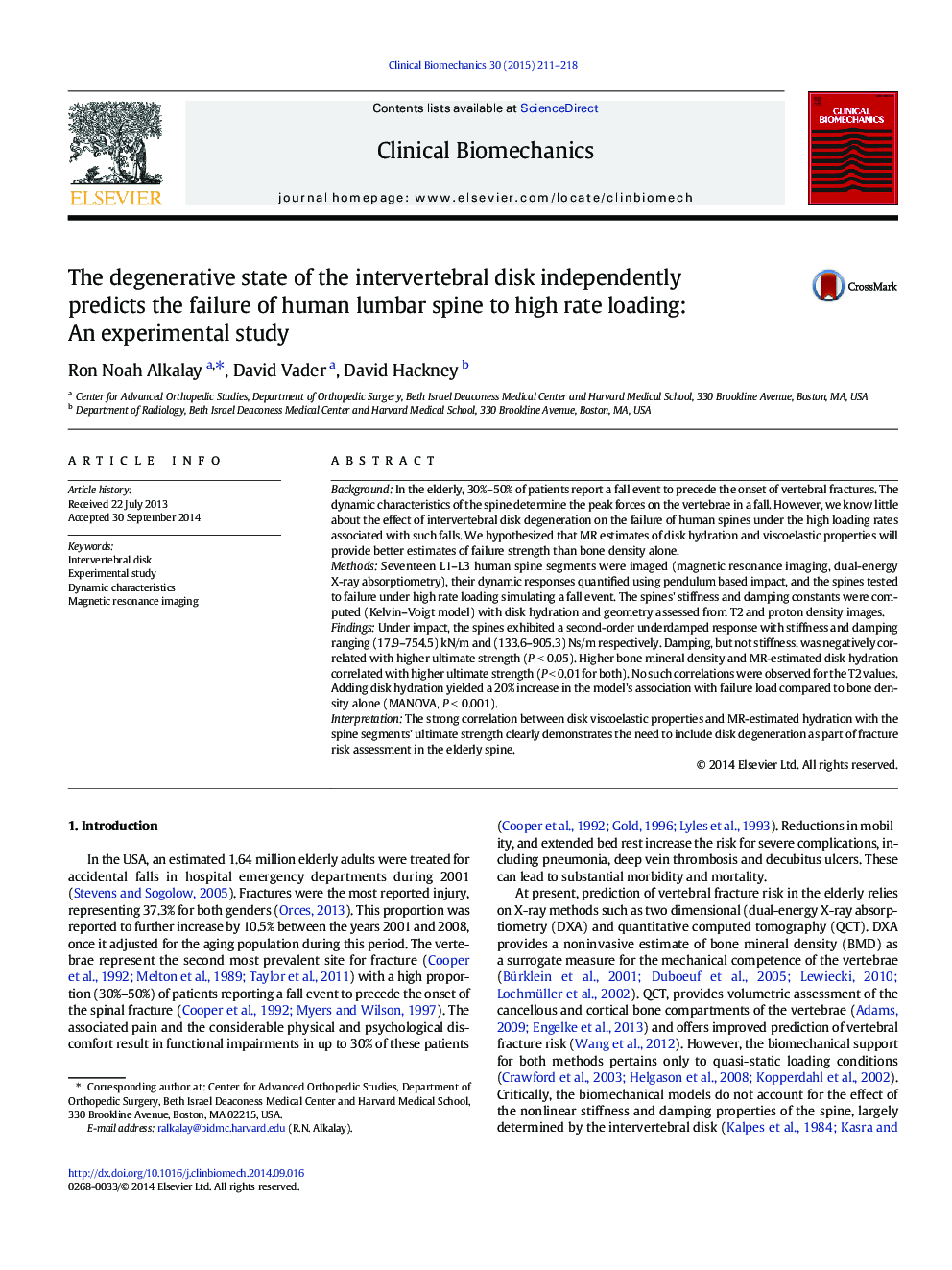| کد مقاله | کد نشریه | سال انتشار | مقاله انگلیسی | نسخه تمام متن |
|---|---|---|---|---|
| 4050331 | 1264921 | 2015 | 8 صفحه PDF | دانلود رایگان |
• We tested the effect of a simulated fall event on the failure of lumbar human spine.
• We evaluated the role of disk dynamic response, bone density and MR hydration.
• Disk viscoelastic properties and hydration strongly correlated with spine failure.
• These correlations were independent of bone density measures in the vertebrae.
• Disk degeneration may form a part of fracture risk assessment in the elderly spine.
BackgroundIn the elderly, 30%–50% of patients report a fall event to precede the onset of vertebral fractures. The dynamic characteristics of the spine determine the peak forces on the vertebrae in a fall. However, we know little about the effect of intervertebral disk degeneration on the failure of human spines under the high loading rates associated with such falls. We hypothesized that MR estimates of disk hydration and viscoelastic properties will provide better estimates of failure strength than bone density alone.MethodsSeventeen L1–L3 human spine segments were imaged (magnetic resonance imaging, dual-energy X-ray absorptiometry), their dynamic responses quantified using pendulum based impact, and the spines tested to failure under high rate loading simulating a fall event. The spines' stiffness and damping constants were computed (Kelvin–Voigt model) with disk hydration and geometry assessed from T2 and proton density images.FindingsUnder impact, the spines exhibited a second-order underdamped response with stiffness and damping ranging (17.9–754.5) kN/m and (133.6–905.3) Ns/m respectively. Damping, but not stiffness, was negatively correlated with higher ultimate strength (P < 0.05). Higher bone mineral density and MR-estimated disk hydration correlated with higher ultimate strength (P < 0.01 for both). No such correlations were observed for the T2 values. Adding disk hydration yielded a 20% increase in the model's association with failure load compared to bone density alone (MANOVA, P < 0.001).InterpretationThe strong correlation between disk viscoelastic properties and MR-estimated hydration with the spine segments' ultimate strength clearly demonstrates the need to include disk degeneration as part of fracture risk assessment in the elderly spine.
Journal: Clinical Biomechanics - Volume 30, Issue 2, February 2015, Pages 211–218
